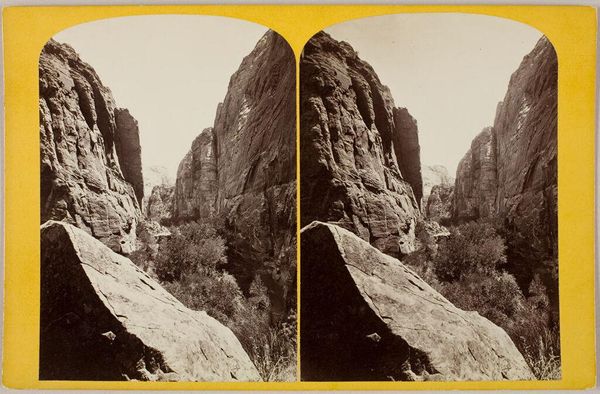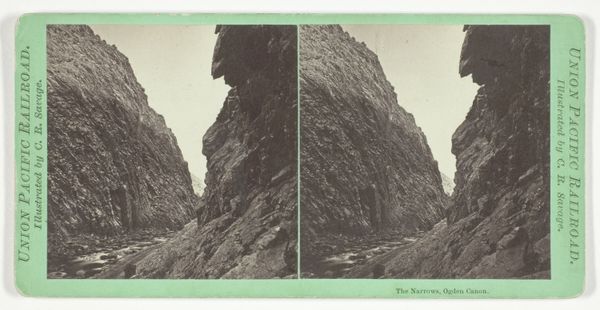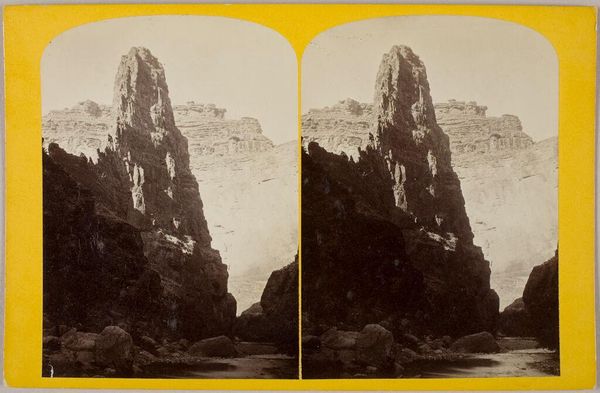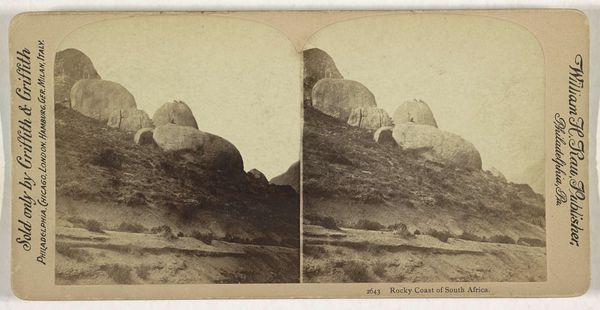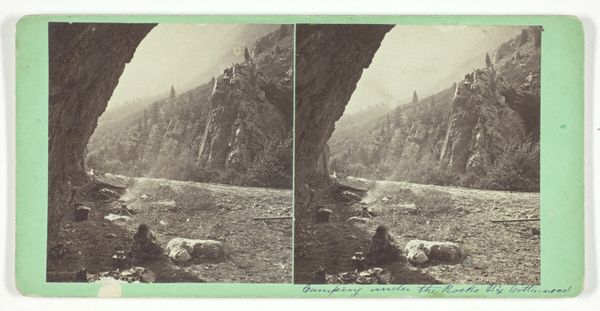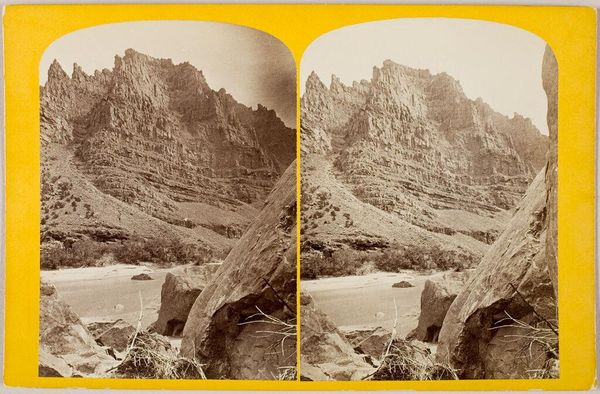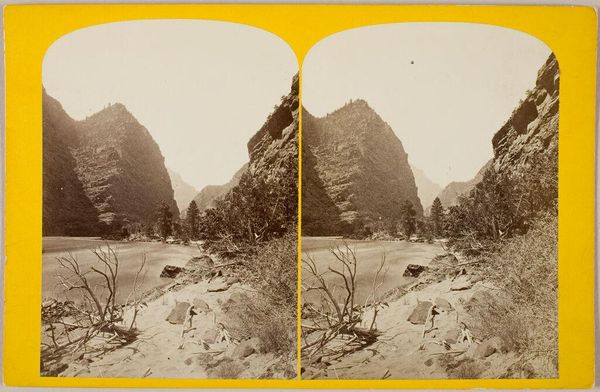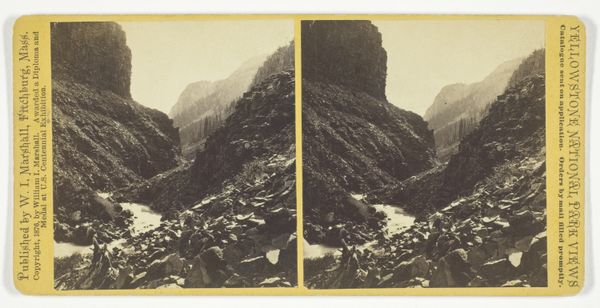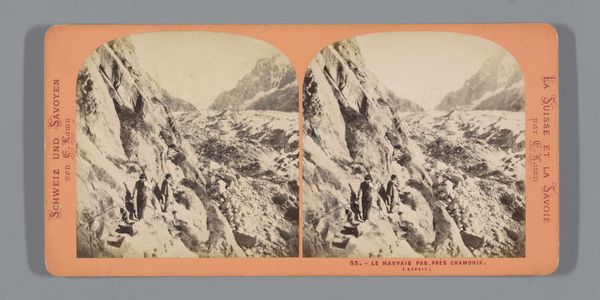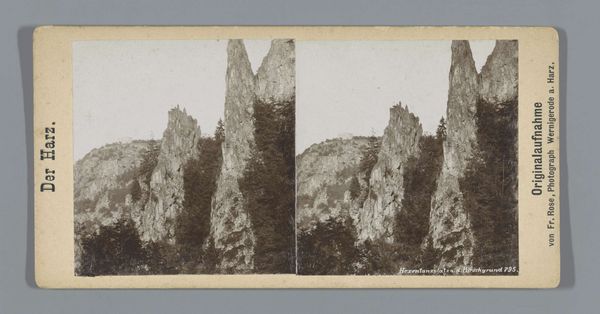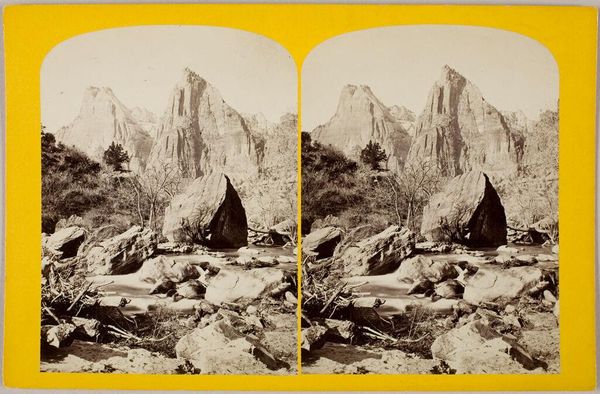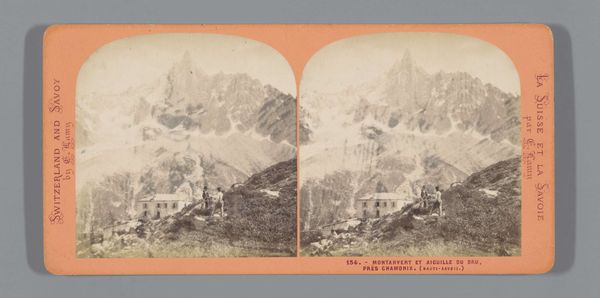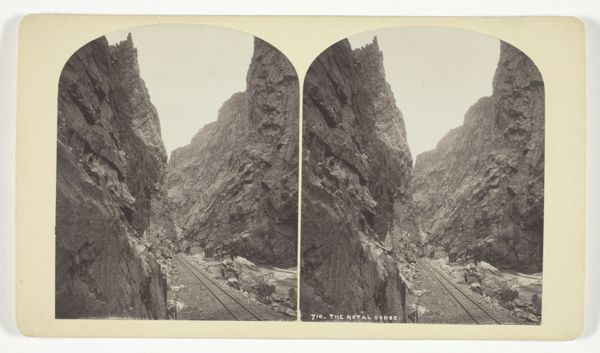
silver, print, photography, gelatin-silver-print, albumen-print
#
16_19th-century
#
silver
# print
#
organic shape
#
landscape
#
photography
#
gelatin-silver-print
#
hudson-river-school
#
united-states
#
albumen-print
Dimensions: 8 × 7.7 cm (each image); 8.7 × 17.6 cm (card)
Copyright: Public Domain
Charles Roscoe Savage created this stereograph of the Temples of the Rio Virgin in the late 19th century. Savage was a British-born photographer who documented the American West, particularly Utah, where he became an important figure in the cultural and economic life of the Mormon community. This stereograph, intended for popular consumption, presents the landscape of Utah as both sublime and a testament to human endeavor. Savage's work coincided with the expansion of the railroad and increased settlement in the West. The "temples" of the Rio Virgin, natural rock formations, are presented as a kind of divine architecture, subtly connecting the landscape to religious themes. Understanding this image requires attention to the history of photography as a tool of exploration, economic development, and the construction of cultural identity in the American West. Further research into Mormon history, the development of Utah, and the popular consumption of landscape imagery in the 19th century could reveal a great deal about this artwork. Ultimately, it is through historical context that we can fully appreciate its cultural significance.
Comments
No comments
Be the first to comment and join the conversation on the ultimate creative platform.
